Curry leaves are a part of a small deciduous aromatic shrub, scientifically named Murraya koenigii, belonging to the family Rutaceae. It may be considered a natural medicinal plant. South Asia is home to this plant, and it is found in countries like Sri Lanka, Bangladesh, China and India. In India, it is found at the bottom of the Himalayas, in Maharashtra, Tamil Nadu, Kerala, and Assam[1].
The plant has vibrant leaves that grow throughout the spring, summer and monsoon and fall off in winter. There are references in Tamil and Kannada literature that describe Murraya koenigii as ‘Kari, ‘ which means ‘spiced sauce’ used as a flavouring agent for vegetables. It is recognised as the most popular spice and condiment in India. It is commonly called Kadipatta or Mitha neem in Hindi, Karuvepillei in Tamil, and Kariveppilee in Malayalam.
Both dried and fresh curry leaves possess good nutritional value and are beneficial for health. Nutritional value of curry leaves per 100 grams.
According to Ayurveda, curry leaves may have many beneficial properties:
The potential uses of curry leaves might be for various health conditions. The benefits of curry leaves found in several studies are as follows:
The efficacy of curry leaves in managing blood sugar was studied in an animal model by Dusane et al. 2012[2]. There was a significant reduction in blood sugar levels. This blood sugar-lowering property of the leaf extract might help with blood sugar levels. This effect may be an insulin-like effect, which might reduce blood sugar either by increasing pancreatic insulin production or glucose uptake by the cells due to specific enzymes. This shows that curry leaves may be effective in managing Diabetes mellitus.
Diabetes is a major disease and must be adequately diagnosed. Unfortunately, the above information is insufficient due to the fact that these studies are not done on humans. However, more human trials are required to show the positive effect of curry leaves on managing blood sugar levels in the body. Hence, it is essential to consult with doctors and only have it as a medicine.
The benefit of curry leaves and their essential oil is that they may act against inflammatory cells. When applied to external superficial injuries like skin eruption, burns, and bruises, they might show wound healing activity. The essential oil from leaves may be used in creams and other formulations that might be effective for sun protection, skin lightening, glowing and moisturising rough skin. Curry leaf oil may also be helpful in dealing with skin problems such as boils, acne, pimples, itching, ringworm, athlete’s foot, etc[3].
There is a need for further studies to develop the beneficial effects of curry leaves to maintain skin health. Therefore, people should consult a doctor before taking any herbal preparations made from curry leaves. In addition, we advise you not to discontinue or replace ongoing medicines with an Ayurvedic or herbal preparation without consulting a doctor.
In an animal study[4] conducted by Xie et al. 2006, curry leaves significantly reduced the total cholesterol and triglyceride (fat) levels. This hypolipidemic (lipid-lowering) activity of curry leaves might be because of its antioxidant properties. It may help to reduce cholesterol and low-density lipids (bad cholesterol); this suggests it may have a potential role in lowering cholesterol and fat metabolism.
However, these studies are not sufficient to understand the effect on humans. We require more information on the benefits of curry leaves in managing cholesterol levels in the human body. Therefore, before using curry leaves for a cholesterol check, it is better to speak with a doctor.
Animal model studies[9] by Desai et al. 2012, revealed that the extract of the curry leaves significantly increased the activity of the liver enzymes that support the oxidation of lipids in the liver. The extract also showed liver-protecting activity that prevented liver damage.
The information mentioned above is insufficient as these studies are done on animals. However, more studies on humans are essential to know the benefits of curry leaves on human health. Hence, it is crucial to consult with your concerned doctors.
Though there are studies showing the benefits of curry leaves in several health conditions, these are insufficient, and there is a need for further studies to establish the true extent of the benefits of curry leaves on human health. Additionally, every person may respond differently to these herbs. Therefore, it is essential to take the advice of a doctor before using curry leaves for any medical condition.
Based on some studies[11], curry leaves might be as effective as chlorhexidine in treating gum inflammation (gingivitis) caused by plaque.
Dr. Rajeev Singh, BAMS
Curry leaves can be used in the following ways:
People need to consult a qualified doctor before taking any herbal supplements made from curry leaves. We recommend that you not replace or discontinue your current medicines with Ayurvedic or herbal preparations without consulting an Ayurvedic doctor.
Also Read: Sesame Seeds: Benefits, Uses, Side Effects and More!
There is no major study that recorded evidence that shows the side effects of curry leaves in humans. However, some studies[8] by Xie et al. 2006 in animal models showed localised gut irritation.
However, If you feel such irritation in the stomach, you should consult an Ayurvedic doctor and get treated immediately.
Based on some studies[10], consuming curry leaves might have a potential effect on the management of colon cancer with minimal toxicity.
Dr. Siddharth Gupta, B.A.M.S, M.D (Ayu)
In general, using curry leaves is safe. However, to avoid any problems, general precautions need to be taken.
You must follow general precautions and instructions given by your doctor while consuming curry leaves regularly, and you should never self-medicate even with natural fruits, vegetables and herbs.
Also Read: 8 Unknown Benefits of Mango Leaves
Therefore, it is essential to discuss your ongoing treatments with your doctors and follow their advice on the dosage and form of the herb. They will recommend the best way to have curry leaves based on your conditions.
Also Read: Betel Leaves: Uses, Benefits, Side Effects By Dr. Smita Barode
Curry leaves are bitter with a strong, pungent smell.
Finely ground leaves taken with buttermilk might be a good home remedy for upset stomach. However, people should not use curry leaves to self-medicate on their own. It is important to consult a doctor.
The calcium and zinc minerals and bioactive components like folic acid, beta carotene and riboflavin present in curry leaves might be good for oral health and used in mouthwash preparations. However, this information is not sufficient. More studies are required to support the benefits of curry leaves on oral health.
Curry leaf extract contains vitamin A (β-carotene) and vitamin C, which may be beneficial for overall hair health.
Curry leaves show anti-diarrhoeal activity due to their components, which may act against harmful intestinal bacteria. But, this information is insufficient, and we require more studies to support the true scope of curry leaves on human health.
Disclaimer: The information provided here is for educational/awareness purposes only and is not intended to be a substitute for medical treatment by a healthcare professional and should not be relied upon to diagnose or treat any medical condition. The reader should consult a registered medical practitioner to determine the appropriateness of the information and before consuming any medication. PharmEasy does not provide any guarantee or warranty (express or implied) regarding the accuracy, adequacy, completeness, legality, reliability or usefulness of the information; and disclaims any liability arising thereof.
Tamarind, scientifically known as Tamarindus indica L., belongs to the family Leguminosae (Fabaceae). It is cultivated almost throughout India1. Tamarind is a multipurpose plant, as almost all parts of the tree are used in the chemical, pharmaceutical, food and textile industries.
Tamarind has good nutritional value. As per the World Health Organization, tamarind fruit is rich in all essential amino acids (except tryptophan). The nutritional value of raw tamarind per 100 grams is as follows2:
Tamarind is a rich source of many phytochemicals and essential amino acids, and hence, it may have many properties and potential uses, including tamarind benefits for health. The potential properties of tamarind are given below.
Tamarind (Imli) may be helpful for many health conditions because of its high nutritional value and potential properties. When exploring the tamarind’s benefits, it’s essential to understand its potential use for various health conditions and organ systems.
Tamarind might help with a heart disease called atherosclerosis, in which there is a deposition of fatty material on the inner walls of blood vessels2. The pulp of tamarind fruit is an excellent source of potassium, which might help in managing blood pressure. Tamarind is also rich in carotene, which might help in lowering bad cholesterol levels which are harmful to the heart2.
Heart conditions are serious and should be diagnosed and treated by doctors; therefore, you should consult a doctor. Moreover, there is a need for more research to state the potential uses of tamarind for the heart as a fact.
Tamarind is a rich source of many nutrients, especially vitamin C, flavonoids, carotenes, and vitamin B complex, which are believed to contribute to numerous tamarind benefits. These compounds might possess potent antioxidant activity, potentially aiding the immune system6. However, more research will be required to prove the claimed effects of tamarind on the immune system.
Tamarind fruit drink may be helpful for iron deïficiency anaemia as it contains vitamin C, which might help in increasing the bioavailability of iron in the body. Tamarind may also be prescribed as a blood tonic by Ayurvedic physicians sometimes. Blood tonics are supplements that may help improve the formation of blood cells. However, there is a need for more research regarding the potential use of tamarind for iron deficiency anaemia. Moreover, the condition is to be diagnosed and treated by a doctor, so please consult a doctor.
Tamarind’s benefits for the liver are worth considering. Tamarind fruit may serve as a natural laxative, and its components have the potential to promote muscle relaxation, which can be beneficial for managing diarrhea2. Furthermore, tamarind seeds contain antioxidants that may help combat free radicals, potentially aiding in conditions such as stomach ulcers7.
Additionally, studies8 suggest that tamarind leaves have anti-apoptotic and liver-protective potential, particularly in cases of acute alcohol-induced liver toxicity. However, it is essential to emphasize that more research is needed to confirm these claims. When dealing with stomach and liver issues, consulting a healthcare professional is crucial, and self-medication or altering ongoing treatments should be avoided. The tamarind’s benefits for the stomach are promising, but professional guidance is essential.
Tamarind is a rich source of many antioxidant compounds, contributing to the potential benefits of tamarind for health. Antioxidant activity is considered beneficial for many health conditions like cancer. The seed extract of tamarind might have potential antioxidant properties and might also exhibit anti-cancer properties7. However, much more extensive research is needed to prove the potential use of tamarind for cancer.
Tamarind seed extract may be used as nutritional support and may be combined with diabetes medicines by doctors to help with diabetes that potentially offers tamarind benefits. The seed extract might show a pancreatic protective effect with its potential anti-inflammatory properties, blood glucose regulation, and reversal of damage to pancreatic tissue2. However, more research is required to prove such claims. Moreover, diabetes should be diagnosed and treated by a doctor.
Tamarind use might have positive effects on skin infections, boils, and other skin disorders9, indicating the potential benefits of tamarind for skin health. A compound found in tamarind is used as a natural additive compound in sun creams as it shows potential properties of immunoprotection and protection from ultraviolet damage10, emphasizing tamarind’s benefits for skin. However, more research is required to prove the potential uses of tamarind for skin.
The benefits for females during pregnancy are notable. Tamarind serves as a valuable source of essential nutrients, including iron and folate, which play a crucial role in promoting a healthy pregnancy11. Additionally, tamarind benefits in pregnancy for females involve helping alleviate common discomforts like nausea and morning sickness, thanks to its soothing properties. However, it’s vital to exercise moderation in tamarind consumption during pregnancy and consult a healthcare professional for personalized advice.
The potential use of tamarind for hair is an emerging trend in natural hair care. It is rich in vitamins and minerals that can naturally nourish and strengthen hair, promoting lustrous and healthy locks. Tamarind-based treatments and products are believed to improve hair quality, reduce dandruff, and support scalp health. Consider incorporating tamarind into your hair care routine for its potential benefits.
Tamarind is a fruit known for its potential health benefits. While it’s not a direct aphrodisiac, its rich content of essential vitamins and minerals, such as vitamin C and antioxidants, may contribute to overall well-being. Some people believe that tamarind benefits sexually and can indirectly support sexual health by enhancing overall vitality. However, it’s essential to note that more scientific research is needed to establish a direct link between tamarind and sexual health benefits. Always consult a healthcare professional for personalized advice on maintaining a healthy sex life.
However, there is insufficient data regarding the potential use of tamarind for the above-mentioned diseases, and more research is required to claim such effects.
I came across a study5 which showed the positive effect of tamarind on obesity. The extract from the fruit pulp of tamarind may have shown promising effects in reducing weight and lowering lipid levels in obese rats. This means that it might be a helpful option for managing obesity. Further research is needed to explore its potential benefits in humans.
Dr. Siddharth Gupta, B.A.M.S, M.D (Ayu)
The most valuable part of the tamarind tree is the fruit, as it contains a sweetish, acidic pulp, which is used for souring tamarind chutney, curries, sauces, and certain beverages. Although almost every part of the tamarind tree is used. Tamarind products, leaves, fruits, and seeds have been used in Indian Ayurvedic medicine and traditional African medicine.
You must consult a qualified doctor before taking any herbal supplements. Do not discontinue or replace an ongoing treatment of modern medicine with an ayurvedic/herbal preparation without consulting a qualified doctor.
According to what I have observed, excess fluoride, especially in drinking water, might be harmful to your health. However, extracts from tamarind leaves and fruit have shown promise in combating fluoride’s negative effects. They may act as antioxidants, reducing fluoride toxicity and protecting the liver and kidneys14.
Dr. Rajeev Singh, BAMS
Also Read: Mulberry (Shahtoot): Uses, Benefits, Side Effects and More!
The side effects associated with tamarind use are given below.
Kindly do not use tamarind to self-medicate, replace, alter, or discontinue any ongoing treatment on your own. Consult a doctor if you are facing any health-related problems.
In a study16 I stumbled upon, it was found that taking tamarind extract by mouth might be effective in reducing swelling. It may also help protect bones and cartilage by reducing the levels of enzymes that might break down cartilage, such as metalloproteinases. This suggests that tamarind extract may have the potential to ease inflammation and minimise damage to bones and cartilage.
Dr. Smita Barode, B.A.M.S, M.S.
There is no sufficient data on the safe usage of tamarind during pregnancy and lactation. Avoid taking tamarind or consult your doctor before taking tamarind during these times and also before giving it to elderly individuals and children.
Please do not self-medicate, replace, alter or discontinue an ongoing treatment.
Also Read: Sesame Seeds: Benefits, Uses, Side Effects and More!
Owing to the presence of many therapeutically active compounds, tamarind can with other drugs.
Therefore, you should consult a doctor and ensure that it is safe for you to take tamarind before eating it.
Also Read: Carrot Beetroot Juice: Uses, Benefits, Side Effects and More!
Almost all parts of the tamarind tree are used, including its pulp, fruit, seed, leaf, flower, bark, etc.
Tamarind can be beneficial for weight loss due to its high fiber content, which helps control appetite and promote a feeling of fullness. Additionally, it may aid in fat metabolism and support overall weight management when incorporated into a balanced diet.
Tamarind is generally not recommended for kidney patients as it contains a significant amount of potassium, which can be harmful for those with kidney issues. High potassium levels may further strain kidney function, so it’s advisable for kidney patients to limit their consumption of tamarind and consult with a healthcare professional for personalized dietary guidance.
Tamarind is acidic in nature. It contains tartaric acid, which gives it a sour taste and makes it acidic on the pH scale.
Tamarind can potentially cause acidity in some individuals, as it is naturally acidic and may trigger acid reflux or heartburn in sensitive people. It’s advisable to consume tamarind in moderation if you are prone to acidity or digestive discomfort.
Tamarind is not typically associated with causing cough. However, in rare cases, an individual with a tamarind allergy might experience throat irritation or cough as part of their allergic reaction. If you suspect an allergy, consult a healthcare professional.
Tamarind is not scientifically proven to stop periods. While some traditional remedies suggest its use for menstrual irregularities, there is no concrete evidence to support this claim. It’s important to consult with a healthcare provider for any concerns related to menstrual health.
There is no scientific evidence to suggest that consuming tamarind can cause a miscarriage. However, it’s essential for pregnant individuals to moderate their tamarind consumption and consult with a healthcare professional for dietary guidance during pregnancy.
Yes, tamarind can be stored in the fridge to extend its shelf life. Place it in an airtight container or wrap it in plastic wrap to prevent moisture and odor absorption. This will help maintain its freshness for an extended period.
Tamarind is more likely to relieve constipation due to its high dietary fiber content. It can help promote regular bowel movements and alleviate constipation when consumed in moderation.
Tamarind may cause gas or bloating in some individuals, as it contains certain natural sugars and fiber that can ferment in the digestive tract, leading to gas production. If you are sensitive to these effects, it’s best to consume tamarind in moderation.
Tamarind may be beneficial for the liver due to its potential antioxidant and liver-protective properties, but more research is needed to establish its effectiveness. Consult with a healthcare professional for personalized advice on liver health.
Tamarind seeds are edible but usually not consumed due to their hard texture and bitter taste. They are often discarded when eating tamarind fruit or used in alternative applications like as a thickening agent or for their potential health benefits.
Tamarind is naturally gluten-free, making it a safe choice for individuals with gluten sensitivity or celiac disease. However, it’s essential to check for potential cross-contamination when using processed tamarind products, as additives or manufacturing processes could introduce gluten.
Disclaimer: The information provided here is for educational/awareness purposes only and is not intended to be a substitute for medical treatment by a healthcare professional and should not be relied upon to diagnose or treat any medical condition. The reader should consult a registered medical practitioner to determine the appropriateness of the information and before consuming any medication. PharmEasy does not provide any guarantee or warranty (express or implied) regarding the accuracy, adequacy, completeness, legality, reliability or usefulness of the information; and disclaims any liability arising thereof.
The liver is the largest organ of the human body. It helps process food and removes toxins from the body. Fatty liver disease is the buildup of excessive fats in the liver cells. Some amount of fat is normal for the liver, but if the fat content is more than 10% of the liver’s weight, you might be suffering from a fatty liver. A fatty liver might not present with any symptoms but can lead to complications like liver damage[1]. However, you can reverse or prevent fatty liver with some lifestyle changes. You can also use some natural home remedies to manage fatty liver.
Did you know?
When the liver cannot process and break down the fats in the body, the fat gets accumulated to cause fatty liver. Overusage of alcohol, malnutrition, and rapid weight loss can also cause fatty liver. The following can make you more prone to fatty liver disease:
However, people who do not have the conditions mentioned above can also develop a fatty liver. A fatty liver can be of two types, non-alcoholic fatty liver disease and alcoholic fatty liver disease.
Fatty liver might not present any symptoms. You may only find out about a fatty liver when you get tests done for other conditions. Fatty liver disease can affect your liver for years without causing any signs or symptoms. However, you might experience these symptoms as the disease gets worse.
The suggested home remedies may help you control the factors that might be contributing to your fatty liver.
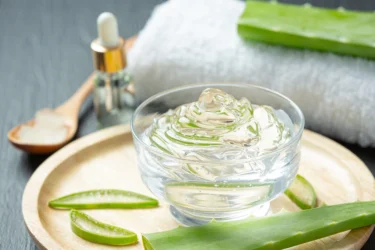
Intake of aloe vera gel helps purify the blood and promote liver function. You need to take fresh aloe vera gel to take care of your fatty liver[3]. However, before using any herbal remedy, it is important to consult or notify your healthcare provider. You can also drink aloe vera juice to help with fatty liver.
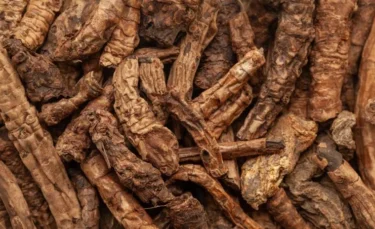
You can take kutki root powder with warm water to manage the changes in the liver due to fatty liver disease[4]. It is important consult your doctor before using herbal remedies, as certain herbs can damage your liver.

Many doctors recommend losing weight to manage the fatty liver disease[5]. Losing weight may help you reduce the fat content in the liver, swelling and fibrosis (tissue damage). It is important to lose weight safely; you should lose no more than half to one kilogram of weight in a week. You can start with regular exercise, which mayhelp you lose weight and reduce fat.

To manage the alcoholic fatty liver disease, you should try quitting alcohol. Alcoholic fatty liver disease is caused due to over-usage of alcohol. Reducing the use of alcohol might help you manage and reverse fatty liver[6]. If you face difficulty quitting alcohol, you might get help from a therapist or take part in an alcohol recovery program.

Fats are high in calories. Consuming more fats can increase your chances of developing obesity. Obesity is one of the risk factors for fatty liver[7]. It is advised to avoid saturated fats and trans fats and add unsaturated fats to your diet, such as omega 3 fatty acids, to get rid of fatty liver disease. Fish is one of the chief sources of omega 3 fatty acids. You can try fish like herring, salmon and mackerel to get sufficient omega 3 fatty acids. Seeds like flaxseeds and chia seeds also contain plenty of omega 3.

Fruits and vegetables are foods with a low glycemic index. Foods with a low glycemic index are less likely to cause a spike in your blood sugar levels. Eating fruits and vegetables will keep your blood sugar under control and help you manage the fatty liver disease.
You need to avoid consuming sugar in high amounts. Managing blood sugar levels may help to deal with fatty liver disease. Avoid foods with a high glycemic index, for example, white rice, white bread, and potatoes. Consumption of foods and drinks that contain high amounts of sugar, especially fructose, should be avoided. Fructose is a simple sugar used to sweeten soft drinks, sports drinks, and sweetened juices and drinks. You also need to consume less sugar at home. The table sugar, scientifically called sucrose, is rapidly converted to fructose and glucose during digestion.
Involving fibre in your diet has numerous health benefits, like keeping the cholesterol under control, keeping the body weight under control, and stabilising the blood glucose levels. Some important sources of dietary fibre include nuts, seeds, wholegrain foods, oats, barley, lentils, peas, and soy. Keeping the body weight under control may help you manage the fatty liver disease and reduce other complications.
Remain vigilant about monitoring your liver enzyme levels in regular blood test reports. Abnormal levels of liver enzymes can serve as indicators of liver conditions such as fatty liver disease. If you notice any irregularities, consult a doctor, who may also recommend additional imaging tests such as liver ultrasonography or liver fibroscan, if necessary. Early detection can help reverse the condition, if not addressed timely the changes may become irreversible leading to serious complications
Dr. Arpit Verma, MBBS, MD (Pharmacology)
Also Read: Signs You May Have Liver Stress
In most cases of fatty liver, there are no symptoms involved; because of this, it becomes difficult to diagnose this disease. You might not experience any symptoms unless the disease has progressed to liver cirrhosis (a late-stage liver disease in which healthy liver tissue gets replaced with scar tissue). If you notice:
You should immediately contact your health care provider.
Also Read: Simple Home Remedies for Frequent Urination
Fatty liver is the condition in which fat builds up in the liver cells. You might not notice any symptoms associated with fatty liver unless the disease has progressed to a severe condition called cirrhosis. One good news is that you can manage fatty liver by taking caution and losing weight. You can also make use of home remedies like aloe vera or kutki to manage fatty liver disease. Exercising and following a proper diet are some other ways to manage fatty liver.
Fatty liver is difficult to diagnose, but if you notice symptoms like nausea, abdominal pain, swollen legs and abdomen and mental confusion accompanied by weakness, you should contact your doctor immediately.
Also Read: What is Hepatitis A? Causes, Symptoms, and How It Spreads
The liver can repair itself. Therefore, if you can avoid the factors causing your fatty liver, you can reverse fatty liver disease. For this, it is important that you consult your doctor and get proper guidance.
Maintaining your overall health is the best way to prevent fatty liver disease. Do things that keep you healthy, such as maintaining a healthy body weight, exercising regularly, and limiting alcohol consumption.
People with non-alcoholic fatty liver disease can develop complications like liver cirrhosis and liver cancer. Liver cirrhosis can lead to liver failure, which requires a liver transplant. Those suffering from alcoholic fatty liver disease can develop complications like alcoholic hepatitis and cirrhosis.
Herbal remedies to manage fatty liver include aloe vera gel and kutki root. Intake of aloe vera gel enhances liver functions, whereas kutki root powder with warm water can help manage fatty liver. Herbal remedies can also cause damage to the liver.3 Therefore, it is important that you consult your healthcare provider before using these herbal remedies. Your doctor can guide you about the possible treatments for fatty liver.
Being overweight is one of the factors that puts you at high risk of developing fatty liver disease. You need to maintain a healthy body weight to stay healthy.
Liver cirrhosis is the result of severe damage to the liver. Fatty liver disease, if left untreated, can progress to liver cirrhosis. The healthy tissues of the liver are replaced by hard scar tissues. Liver cirrhosis can slow down or completely block liver functions. It can progress to liver cancer or liver failure.
Disclaimer: The information provided here is for educational/awareness purposes only and is not intended to be a substitute for medical treatment by a healthcare professional and should not be relied upon to diagnose or treat any medical condition. The reader should consult a registered medical practitioner to determine the appropriateness of the information and before consuming any medication. PharmEasy does not provide any guarantee or warranty (express or implied) regarding the accuracy, adequacy, completeness, legality, reliability or usefulness of the information; and disclaims any liability arising thereof.
Pudina, scientifically known as Mentha spicata, is an aromatic herb belonging to the mint family (Lamiaceae). It is called Spearmint in English and is widely used in Indian and Italian cooking. It is one of the best mints used for flavour. The herb originated in Europe1. Fresh and dried plant and essential oils derived from Pudina are widely used in the food, cosmetic, confectionery, chewing gum, toothpaste, and pharmaceutical industries2. It is grown worldwide for commercial uses as a flavouring agent for food and to be used in medicines3. The plant is commonly called Pudina in Hindi4.
Pudina has good nutritional value owing to the number of dietary components present. Moreover, it is a good source of many micronutrients and macronutrients.
It also contains vitamins like:
Did you know?
Pudina may exhibit the following therapeutic properties:
Because of the various properties of pudina, it may show potential uses against different disease conditions. Some of the potential uses of pudina are given below.
Pudina is recommended as per traditional Iranian medicine to be included in daily diets to avoid flatulence (gas build-up in the stomach). Pudina may also help clean up toxins from the gut (these are the end products of gastric digestion) and strengthen the stomach. It may also be effective in dyspepsia (indigestion) symptoms such as appetite, bloating, belching (burping), and nausea5. A decoction of pudina leaves may be used to relieve common digestive problems3. However, if you suffer from digestive issues, you should consult your healthcare provider and get a proper diagnosis and treatment.
Administration of pudina extract showed a significant reduction in blood glucose levels during animal studies3. When tested on diabetic rats during animal trials, pudina leaf extract showed a remarkable improvement in blood glucose and cholesterol levels. These antidiabetic properties of pudina have been observed in animal trials, and more studies are required to consolidate the use of pudina in humans. If you have diabetes, you must follow your doctor’s advice and prescribed treatment.
It’s important to exercise caution when consuming Mentha piperita (peppermint) and spearmint teas, as excessive intake may lead to iron depletion and potentially result in anaemia. These teas have the potential to interfere with iron absorption in the body, which can be detrimental to your overall health7.
Dr. Rajeev Singh, BAMS
In laboratory studies3, the extract of pudina leaves showed strong anticancer activity against various cancer cells. In lab studies, extracts from pudina leaves slowed the growth of breast and mouth cancer cells. However, more studies are required to support the use of pudina during cancer. Therefore, you are advised not to use pudina or other herbs to manage disease conditions.
The essential oil of pudina proved to be effective as an anti-inflammatory and analgesic (pain reliever) agent in animal trials3, indicating that pudina may help reduce inflammation and swelling and ease the pain. However, these properties have been observed during animal trials. More studies are required to support using Pudina for inflammation and pain.
Be careful when using or inhaling menthol, as it can have adverse effects on certain individuals. In sensitive individuals, menthol inhalation may lead to apnoea (temporary pause in breathing) and laryngospasm (sudden closure of the vocal cords). This can initially create discomfort and if left unattended, it can worsen to a life-threatening emergency7!
Dr. Smita Barode, B.A.M.S, M.S.
Pudina extract showed learning and memory-enhancing benefits in animal and human studies3. Oral administration of pudina extract improved mood, sleep quality and working memory. It has also been reported that pudina improves sleep, mood, learning and memory in men and women having age-related memory impairment3. However, more studies are required to understand the full extent of the effects of pudina on the brain. Therefore, if you experience any problems related to learning, memory, and sleep quality, you need to seek medical help.
Based on my observations, it is possible that pudina (mint) may possess antiyeast properties. This means that it has the potential to inhibit the growth or activity of yeast organisms. The specific components present in pudina may help to disrupt the yeast’s normal functioning, thereby reducing its ability to cause infections or overgrowth7.
Dr. Siddharth Gupta, B.A.M.S, M.D (Ayu)
Though some studies show the benefits of pudina in various conditions, these are insufficient and there is a need for further studies to establish the true extent of the benefits of pudina on human health.
Pudina leaves are widely used for culinary purposes such as
You must consult a qualified doctor before taking pudina or any herbal supplements. Likewise, do not discontinue or replace an ongoing treatment of modern medicine with an ayurvedic/herbal preparation without consulting a qualified doctor.
Pudina and its essential oils are safe when consumed in amounts like those found in foods. Some of the side effects associated with pudina use are given below.
Before using pudina for its health effects, you need to consult your healthcare provider and get a proper diagnosis and treatment. It’ll help you avoid any unwanted side effects.
Some general precautions associated with pudina use are given below.
Pudina is possibly unsafe to consume during pregnancy. High doses may cause uterine damage6.
There is insufficient reliable information to determine whether pudina is safe to use while breastfeeding. To be safe, avoid using higher amounts of Pudina6.
Eating a large amount of Pudina might worsen existing kidney damage. Pudina tea might increase kidney damage in people, so it’s best to avoid it unless recommended by your Ayurvedic physician6.
Pudina tea might increase liver damage. So, using large amounts of pudina tea might worsen liver disease.
If you want to take pudina for any of its properties, make sure to consult a healthcare provider as they will be able to guide you about the possible precautions you need to take to avoid any unwanted effects.
Pudina shows moderate interaction with some drugs. You need to take precautions if you take these drugs.
Pudina, when taken in higher amounts, can damage the liver. Some medicines can harm the liver as well. Using Pudina in high quantities along with these medications can worsen existing liver damage. It is advised not to use Pudina when taking drugs such as:
Acetaminophen (used for pain relief), carbamazepine (used for epilepsy), amiodarone (used for heart disease), isoniazid (INH) (used for tuberculosis), methotrexate (used for cancer), methyldopa (used for high blood pressure), fluconazole (used for fungal infection), itraconazole (used for fungal infection), phenytoin (used for epilepsy), lovastatin (used for high blood pressure), pravastatin (used for high blood pressure), erythromycin (used for bacterial infection), simvastatin are some examples of drugs that might affect the liver6.
A chemical substance found in Pudina might cause sleepiness and drowsiness. Sleep and drowsiness are common side effects of sedative medications. As a result, combining pudina with sedative medications may amplify the impact and produce additional sleepiness. Clonazepam, lorazepam, phenobarbital, and zolpidem7 are some examples of sedative drugs6.
If you are taking medication for any disease condition, make sure you have consulted your doctor about the possible interactions of the medication with other herbs and drugs. This will help you make well-informed choices and avoid unwanted herb-drug interactions.
Pudina may sit quietly in our kitchens, but its benefits stretch far beyond the plate. From aiding digestion to lifting your mood, it has a legacy of traditional use and emerging scientific interest. While not a cure-all, it’s a versatile herb that can be safely enjoyed in moderation as part of a balanced lifestyle. Like most natural remedies, its true value lies in how thoughtfully we use it.
Pudina is an aromatic herb widely used for its culinary benefits in foods1.
Mint leaf has many effective properties; it may aid in relieving gas in the stomach. It has shown benefits in diabetes, inflammation, and cancer in several animal trials6. It may also help in enhancing memory and mood3. However, you are advised to consult your healthcare provider or doctor before using Pudina for any of the disease conditions.
Pudina leaves can be used for various culinary purposes. For example, fresh or dried leaves and flowers of Pudina can be used to prepare teas, beverages, sauces, jellies, and vinegar. Pudina leaves can also be added to fruit salads, peas, syrups, candies, ice creams, lamb dishes and Pudina sauce1.
No, Pudina may be harmful if consumed in large quantities during pregnancy because it may cause uterine damage. Therefore, excessive Pudina consumption should be avoided during pregnancy. Also, before using any herb during pregnancy, make sure you have consulted your doctor about its limitations.
Disclaimer: The information provided here is for educational/awareness purposes only and is not intended to be a substitute for medical treatment by a healthcare professional and should not be relied upon to diagnose or treat any medical condition. The reader should consult a registered medical practitioner to determine the appropriateness of the information and before consuming any medication. PharmEasy does not provide any guarantee or warranty (express or implied) regarding the accuracy, adequacy, completeness, legality, reliability or usefulness of the information; and disclaims any liability arising thereof.
Chia seeds, also known as Salvia hispanica, are tiny superfoods packed with essential nutrients. They offer various health benefits. Chia seeds are rich in omega-3 fatty acids, fibre, protein, and vitamins and minerals.
From improving heart health to supporting digestion, these little seeds are a good addition to any diet. The oil extracted from them is even used in cosmetics, while other parts of the plant have been used for medicinal purposes[2]. In this blog, we’ll read about chia seeds’ uses, benefits, and side effects.
Friendly Reminder: The information shared here is for educational purposes only and the reader should consult a registered medical practitioner before implementing any changes to their health routine.
Chia seeds contain omega-3 fatty acids[3], proteins, and fibre. They also have micronutrients like magnesium, zinc, iron, calcium, and some B vitamins. Soak them in water for the perfect, easy-to-consume texture.
Chia seeds are a superfood, but don’t be quick to snack on them alone! Although these seeds are packed with nutrients, eating them dry can be harmful. The seeds can absorb water in your digestive system and potentially cause issues, so it’s best to incorporate them into a recipe or mix them with a liquid before consuming them to reap their benefits safely.
Dr. Siddharth Gupta, B.A.M.S, M.D (Ayu)
Chia seeds might be beneficial for various conditions. However, more research is needed to determine their potential benefits for human health.
Some animal studies have shown that chia seeds may benefit type 2 diabetes. In an animal study by Chicco et al. 2009[5], chia seeds decreased the internal fatty tissue and insulin resistance, indicating that chia seeds may have a role in lipid and glucose homeostasis (maintaining balance)[7].
This information is insufficient because these studies were conducted on animals. However, more studies on humans are required to support using chia seeds to manage blood sugar levels.
Inflammatory diseases are linked with redness, pain, and swelling, which might lead to the loss of essential functions. A chia seed oil in the diet may have been shown to lower the risk of pro-inflammatory agents (involved in inflammation)[3]. Therefore, chia seed oil might benefit the management of inflammatory diseases.
High levels of high-density lipoprotein (HDL) cholesterol (bad cholesterol) in the blood may be directly linked to developing heart-related diseases in humans. Consuming chia seeds may have been shown to lower serum cholesterol levels[6], as they contain a high amount of unsaturated omega-3 fatty acids and dietary fibre[2]. Therefore, chia seeds might be beneficial in fighting heart diseases. However, extensive research will be required to back up such claims.
High blood pressure and dyslipidemia (high levels of fats or cholesterol in blood) may be the most critical risk factors for heart diseases. Some studies have shown that chia seeds may have the potential to manage blood pressure and dyslipidemia[8]. People with high blood pressure who consume chia seed flour experience reduced blood pressure[9]. It might be caused by many fatty acids that have anti-inflammatory and antioxidant properties[2].
As chia seeds are low in carbohydrates and high in dietary fibre, they may reduce the desire to eat and increase satiety (a state of being fed beyond capacity). A review report by Grancieri et al. 2019 suggests that consuming chia seeds by overweight and diabetic adults may support weight loss[3], reduce waist circumference, and increase adiponectin (a protein hormone that reduces inflammation and fat deposition in the blood). They may also be beneficial for overweight and obese individuals. However, this information is insufficient, and more research is needed to support the potential use of chia seeds in managing weight loss in humans[4].
Chia seeds can be used as:
It is essential to consult a physician before taking herbal supplements containing chia seeds. We strongly advise against replacing or discontinuing any prescribed medications with Ayurvedic or herbal products without consulting a doctor. They can guide you on the appropriate form and dosage for your needs.
Although chia seeds are relatively safe, some stomach-related side effects (unspecified) have been reported.
If you experience any side effects from chia seed, seek immediate medical attention from a doctor.
Having chia seeds in small quantities is safe. However, general precautions need to be followed.
Also Read: List of Protein Rich Food for Vegetarians
Natural products may interact with your ongoing treatment, so you must always disclose your ongoing treatments to your doctor and discuss the possible reactions before they prescribe you a dosage of natural products for their benefits as per your condition.
Also Read: 14 Amazing Health Benefits of Pumpkin Seeds!
Chia seeds are a nutritious addition to your diet, offering a variety of health benefits. They are suitable for digestion and promote heart health. They also provide a good source of protein, antioxidants, and essential minerals like calcium and magnesium, making them an excellent choice for boosting energy levels and promoting overall wellness.
Chia seeds may have many health benefits. They may suit diabetes, high blood pressure, heart-related diseases, and obesity. They may also have anti-cancer, antioxidant, and anti-inflammatory properties[2]. However, one should always consult a doctor before using chia seeds for any health conditions.
In a study by Morato et al. 2015, chia seeds reduced body weight and fat in overweight and obese people. Chia seeds are low in carbohydrates and high in dietary fibre, which might reduce the desire to eat and increase satiety. Therefore, it might benefit you in losing weight. However, more studies on humans are required to confirm this.
Chia seeds might be good for diabetes. Some animal and human studies found that chia seeds may benefit diabetes management[8]. In animals, chia seeds lowered the internal fatty tissue and insulin resistance and might be involved in maintaining a balance in lipid and glucose levels. However, this information is insufficient and requires more human studies to support this claim.
There is insufficient data on the safe usage of chia seeds during pregnancy. Therefore, consult your doctor before taking/consuming chia seeds during pregnancy.
Yes, there are various nutrients in chia seeds, including carbohydrates, proteins, fats, fibre, energy, iron, calcium, magnesium, sodium, potassium, phosphorus, copper, zinc, manganese, selenium, vitamins A, B1, B2, B3, B9, C, and E.
Yes, chia seeds might cause allergies. People who are allergic to mustard seeds and sesame should avoid chia seeds.
You can use chia seeds by first soaking them in water. They can be added to smoothies, desserts and more.
1. De Falco B, Amato M, Lanzotti V. Chia seeds products: an overview. Phytochem Rev. 2017;16(4):745–60. Available at: https://www.researchgate.net/publication/316994147_Chia_seeds_products_an_overview
2. Grancieri M, Martino HSD, Gonzalez de Mejia E. Chia Seed (Salvia hispanica L.) as a Source of Proteins and Bioactive Peptides with Health Benefits: A Review. Compr Rev Food Sci Food Saf. 2019;18(2):480–99. Available at: https://pubmed.ncbi.nlm.nih.gov/33336944/
3. Restivo J. Chia seed benefits: What you need to know [Internet]. Harvard Health; 2024 [cited 2025 Feb 4]. Available from: https://www.health.harvard.edu/nutrition/chia-seed-benefits-what-you-need-to-know
4. Ulbricht C, Chao W, Nummy K, Rusie E, Tanguay-Colucci S, Iannuzzi C, et al. Chia (Salvia hispanica): A Systematic Review by the Natural Standard Research Collaboration. Rev Recent Clin Trials. 2009;4(3):168–74. Available at: https://pubmed.ncbi.nlm.nih.gov/20028328/
5. Dietary chia seed (Salvia hispanica L.) rich in α-linolenic acid improves adiposity and normalises hypertriacylglycerolaemia and insulin resistance in dyslipaemic rats. [cited 2025 Feb 4]. Available at: https://www.cambridge.org/core/journals/british-journal-of-nutrition/article/dietary-chia-seed-salvia-hispanica-l-rich-in-linolenic-acid-improves-adiposity-and-normalises-hypertriacylglycerolaemia-and-insulin-resistance-in-dyslipaemic-rats/9B9047EBE0643F49D68AD61EF00CD02D
6. Dickens B, Sassanpour M, Bischoff EL. The effect of chia seeds on high-density lipoprotein (HDL) cholesterol. Cureus. 2023 Jun 13 [cited 2025 Feb 25]. Available from: https://pmc.ncbi.nlm.nih.gov/articles/PMC10339661/#ref-list1
7. Da Silva Marineli R, Moura CS, Moraes ÉA, Lenquiste SA, Lollo PCB, Morato PN, et al. Chia (Salvia hispanica L.) enhances HSP, PGC-1α expressions and improves glucose tolerance in diet-induced obese rats. Nutrition. 2014 Dec 20 [cited 2025 Feb 25]. Available from: https://pubmed.ncbi.nlm.nih.gov/25837222/
8. Ullah R, Nadeem M, Khalique A, Imran M, Mehmood S, Javid A, et al. Nutritional and therapeutic perspectives of Chia (Salvia hispanica L.): A review. Journal of Food Science and Technology. 2015 Oct 1 [cited 2025 Feb 25]. Available from: https://pmc.ncbi.nlm.nih.gov/articles/PMC4926888/
9. Toscano LT, Da Silva CSO, Toscano LT, De Almeida AEM, Da Cruz Santos A, Silva AS. Chia flour supplementation reduces blood pressure in hypertensive subjects. Plant Foods for Human Nutrition. 2014 Nov 18 [cited 2025 Feb 25]. Available from: https://pubmed.ncbi.nlm.nih.gov/25403867/
10. Chia seed (Salvia hispanica L.) supplementation to the diet of adults with type 2 diabetes improved systolic blood pressure: A randomized controlled trial. Available from: https://pubmed.ncbi.nlm.nih.gov/33530854/
Disclaimer: The information provided here is for educational/awareness purposes only and is not intended to be a substitute for medical treatment by a healthcare professional and should not be relied upon to diagnose or treat any medical condition. The reader should consult a registered medical practitioner to determine the appropriateness of the information and before consuming any medication. PharmEasy does not provide any guarantee or warranty (express or implied) regarding the accuracy, adequacy, completeness, legality, reliability, or usefulness of the information; and disclaims any liability arising thereof.
Urad dal, scientifically called Vigna mungo, is a lentil most commonly used in South Indian households. It is also called Urd bean, Urad bean, Black lentil, Black matte bean, Mungo bean in English, and Urad dal in Hindi. Vigna mungo seeds are mainly a staple food, and the dehulled and split seeds (dhal in Hindi) are a typical dish in South Asia. It can be found in Asia, Madagascar, and Africa1. Vigna mungo is a hairy and bushy annual plant that has an elaborate taproot. The stem is highly branched from the base. The plant is cultivated for its edible seeds in tropical countries, especially in Asia2.
Black gram split (urad dal) and whole urad dal have tremendous nutritional value. Urad dal is a good source of proteins, carbohydrates, lipids, iron, and calcium. In addition, whole urad has dietary fibre, whereas urad dal (split urad) does not contain fibre. Among the phytochemicals, prominent phytochemicals present in urad dal are flavonoids and phenolic compounds.
The nutritional value table below is for 100 grams of urad dal, and the whole Urad is given below:
Nutritional value of urad dal (black gram split) per 100 grams3
Nutritional value of urad whole (black gram whole) per 100 grams
Vitamins like tocopherols are also present in black gram.
The seed coat of Urad contains various phytochemicals that may show many properties. Some of the properties of urad dal are mentioned below.
Regularly eating urad dal with a low-fat diet may help maintain lipid homeostasis (balance). As a result, it may help reduce the risk of heart disease. Agents responsible for this heart-friendly property of Urad dal are fibre, low glycemic index, and minor components like saponins, phytosterols, and oligosaccharides. Also, the lipids in black gram may show cholesterol-lowering effects in humans7. If you are suffering from heart disease, make sure you talk to your healthcare provider before using urad dal for its benefits.
Urad dal has a low glycemic index (increases blood glucose levels slowly). Along with a low glycemic index, it also has a high content of indigestible fibre, making it an excellent candidate for maintaining blood sugar levels in individuals with diabetes7. Also, black gram may help prevent insulin resistance associated with type 2 diabetes. Hence, black gram may be consumed to avoid type 2 diabetes. However, diabetes is a severe health condition that requires you to strictly adhere to the doctor’s advice. Avoid using urad dal or any herbal remedy to manage your symptoms without consulting a doctor first.
The presence of lipids, proteins, and fats lends black gram high nutritional value. In addition, black gram may help maintain a healthy body weight by providing early satiety due to its high fibre content, limiting overall food consumption7. However, if you are looking to reduce or manage weight, you can reach out to a dietitian or nutritionist, as they will be able to better guide you about the benefits and limitations of each diet.
Prebiotics are indigestible foods beneficial in stimulating the growth of helpful intestinal bacteria and improving overall gut health. Black grams are a good source of prebiotics. Consuming black grams (whole) may provide prebiotic health benefits and might be regarded as a potential functional food7.
In excess, reactive oxygen species (ROS) can damage cells like proteins, lipids, and DNA, resulting in conditions like cancer, neurodegenerative diseases, and atherosclerosis. Black grams are rich in polyphenols, which possess antioxidant properties. Polyphenols may prevent cellular damage caused by the presence of excessive ROS and thus protect from diseases caused by long-term and chronic inflammation7.
Urad dal may show liver-protective and kidney-protective properties. These properties might be due to components like phenolics, tannins, flavonoids, and phytic acid in urad. These components are potent antioxidants that may show a protective effect on the liver and kidneys7. However, if you are suffering from kidney or liver disease, you need to consult your healthcare provider before using urad dal or any other herbal remedy for kidney or liver problems.
Though studies show the benefits of urad dal in various conditions, these are insufficient, and there is a need for further studies to establish the true extent of the benefits of urad dal on human health.
Did you know that combining mung beans with cereals can greatly enhance the quality of protein in your diet? Cereals are rich in amino acids that contain sulfur, but they lack lysine, an essential amino acid. By pairing mung beans with cereals, you can create a complete protein source that provides all the necessary amino acids for your body’s needs.
Dr. Rajeev Singh, BAMS
There are several ways you can involve urad dal in your diet,
You must consult a qualified doctor before taking urad dal or herbal supplements. Likewise, do not discontinue or replace an ongoing modern medical treatment with an ayurvedic/herbal preparation without consulting a qualified doctor.
In my experience, I have found that mung beans can be an excellent protein source for individuals who prefer a vegetarian diet. Mung bean protein is not only cost-effective but also highly digestible compared to the protein found in other legumes. This means that your body can efficiently break down and absorb the nutrients from mung bean protein, providing you with the necessary building blocks for muscle growth and overall health.
Dr. Siddharth Gupta, B.A.M.S, M.D (Ayu)
Currently, no known side effects are associated with consuming urad dal in moderate quantities. However, if you experience any side effects after eating urad dal, you must consult a healthcare provider or doctor immediately.
Also, avoid using urad dal or other herbs to manage health conditions without consulting your healthcare provider. This will help you avoid unwanted side effects.
Also Read: Coconut Milk: Uses, Benefits, Side Effects and More!
Urad dal may be added as a food component in the diet. But while using any herbal product for its benefits, one must follow general precautions and eat it in moderation. Moreover, if you want to use urad dal for its properties or against any disease conditions, talk to your doctor first. It will help you make well-informed choices and avoid unwanted health effects.
Over the years, I have learned that in China and other Asian countries, the mung bean is recognised as a functional food with detoxifying properties. The specific mechanisms by which it achieves this detoxification are still being studied, but it is believed that the high fibre content and antioxidant compounds in mung beans help to eliminate toxins from the body and promote overall detoxification processes.
Dr. Smita Barode, BAMS, MS
There are no reported interactions of urad dal with other drugs and medicines. However, if you are taking medication for any health condition, you need to consult with your doctor about the possible interactions of the drug with other foods and herbs.
Also, you are advised not to use urad dal for any disease condition without a doctor’s consultation.
Also Read: Chandraprabha Vati (Chandraprabha Gulika): Uses, Benefits, Side Effects, Precautions & More!
Often overlooked and underestimated, urad dal is more than just a supporting ingredient in your meals. Right from supporting heart health and blood sugar control to improving digestion and offering antioxidant protection, it quietly does a lot of heavy lifting behind the scenes. Its versatility in Indian cooking makes it easy to include in everyday meals, and when consumed mindfully, it can be a smart ally for better health. However, if you’re dealing with specific health concerns, it’s best to discuss dietary changes with your doctor to ensure they align with your nutritional needs.
Black gram split is the English name for urad dal.
Urad dal possesses excellent antioxidant properties that make it beneficial for the heart, liver and kidneys. In addition, it has a low glycemic index and high dietary fibre content that may be helpful as a good food substance for patients with diabetes and those on weight control diets. However, consult your healthcare provider before using urad dal for any of its health benefits.
There are no reported major side effects of urad dal. Its seeds are edible and consumed as food. However, if you experience any side effects after consuming urad dal, immediately reach out to your healthcare provider.
Black grams may help in maintaining a healthy body weight by providing a satiety effect, which leads to limiting overall food consumption. So, it may be used to manage obesity. However, it is better to consult your healthcare provider or dietitian before discontinuing medication or making any dietary changes.
1. Black gram (Vigna mungo) | Feedipedia [Internet]. [cited 2022 Apr 6]. Available from: https://www.feedipedia.org/node/236
2. Vigna mungo – Useful Tropical Plants [Internet]. [cited 2022 Apr 6]. Available from: https://tropical.theferns.info/viewtropical.php?id=Vigna+mungo
3. Urad dal by DIYA. NutritionValue.org. [cited 2025 May 28]. Available from: https://www.nutritionvalue.org/Urad_dal_by_DIYA_593298_nutritional_value.html?size=100+g
4. Girish TK, Pratape VM, Prasada Rao UJS. Nutrient distribution, phenolic acid composition, antioxidant and alpha-glucosidase inhibitory potentials of black gram (Vigna mungo L.) and its milled by-products. Food Research International. 2012 Apr 1;46(1):370–7. Available from: https://www.sciencedirect.com/science/article/abs/pii/S0963996912000117
5. Swaroopa C, Kashmira L, Vikas G, Rajan W. Assessment of the prebiotic potential of seed coats from green gram (Vigna radiata) and black gram (Vigna mungo). Journal of Food Science and Technology 2021 59:2 [Internet]. 2021 Mar 3 [cited 2022 Apr 6];59(2):583–8. Available from: https://link.springer.com/article/10.1007/s13197-021-05043-2
6. Arockianathan PM, Rajalakshmi K, Nagappan P. Proximate composition, phytochemicals, minerals and antioxidant activities of Vigna mungo L. seed coat. Bioinformation. 2019 Aug 31 [cited 2025 May 28]. Available from: https://pmc.ncbi.nlm.nih.gov/articles/PMC6822517/
7. Swamy KRM. Origin, domestication, taxonomy, botanical description, genetics and cytogenetics, genetic diversity and breeding of urad bean (Vigna mungo (L.) Hepper). International Journal of Current Research. 2023 Aug 30 [cited 2025 May 28]. Available from: https://www.journalcra.com/sites/default/files/issue-pdf/45739.pdf
Disclaimer: The information provided here is for educational/awareness purposes only and is not intended to be a substitute for medical treatment by a healthcare professional and should not be relied upon to diagnose or treat any medical condition. The reader should consult a registered medical practitioner to determine the appropriateness of the information and before consuming any medication. PharmEasy does not provide any guarantee or warranty (express or implied) regarding the accuracy, adequacy, completeness, legality, reliability or usefulness of the information; and disclaims any liability arising thereof.
Harad, scientifically known as Terminalia chebula, is an ayurvedic herb belonging to the Combretaceae family. Because of its extraordinary health benefits, it is also called the King of Medicine1. The harad plant is found in the Middle East and tropical countries such as China, India, and Thailand2. It is a tropical, large, evergreen tree with thick, black and cracked bark. Its seeds can be eaten as snacks. Fruits of harad are yellow to orange-brown2. It is also used as one of the ingredients of the popular ayurvedic formulation Triphala, which is traditionally used for treating various stomach disorders3.
Other names of Harad include Harre, Harad, Harar in Hindi; Myrobalan in English; Abhaya, Kayastha, Shiva, Pathya, Vijaya in Sanskrit; Shilikha in Assamese; Haritaki in Bengali; Hirdo, Himaja, Pulo-harda in Gujrati; Alalekai in Kannada; Halela in Kashmiri; Katukka in Malayalam; Hirda, Haritaki, Harda, Hireda in Marathi; Harida in Oriya; Halela, Harar in Punjabi; Kadukkai in Tamil; Karaka, Karakkaya in Telugu; Halela in Urdu4.
Harad contains many chemical components with antioxidant benefits, such as phenolic acids, benzoic acids, cinnamic acids, flavonoids, beta-sitosterol (a plant sterol used to reduce cholesterol levels) and glycosides. Nutritional components like amino acids, fatty acids, and fructose are also found in harad5.
Harad is loaded with beneficial properties like:
In traditional systems of medicine, the fruits of Harad, have been extensively used in Ayurveda, Unani and Homeopathic systems of Medicine2. With various phytochemicals like polyphenols, flavonoids, anthocyanins, alkaloids, terpenes and glycosides, harad provides may show potential uses against many diseases condtions5.
The fruits, leaves, and bark of harad exhibit potent antioxidant properties due to their phenolic compounds. Harad extract may disrupt free radicals (which cause damage to body proteins and DNA) and inhibit oxidising enzymes in the body. This may help lower inflammation in the body5.
The phenolic compounds present in harad suggest good anti-cancer activity in laboratory trials. Harad fruit extract may have the potential to inhibit the growth or increase in the number of cancer cells and induce death in several types of cancer cells, including human breast cancer cells, human bone cancer cells, and prostate cancer cells, as seen in lab-scale studies6. However, more studies are required to support the use of harad in cancer. You are advised not to use any herb without consulting your doctor first.
Harad fruit has shown anti-diabetic properties in several lab trials. In addition, long-term and short-term animal studies7 may have shown that it can lower blood glucose levels in diabetic rats. With larger human trials, we might be able to establish the use of harad even in humans to avoid or manage diabetes. Diabetes is a serious health condition that requires you to adhere to doctor’s advice and treatment. Avoid using any herb or remedy without consulting your healthcare provider.
Animal studies8 have shown that harad fruits may have significant liver-protective properties and could potentially prevent liver cell toxicity. In addition, it may help avoid drug-induced liver cell toxicity. However, if you suffer from liver problems, you are advised not to use any herb or remedy without talking to your healthcare provider.
Harad may exhibit anti-bacterial activity against many infectious bacteria like Clostridium perfingens and Escherichia coli. It might also be effective against Helicobacter pylori, which causes stomach ulcers, gastritis (gastric inflammation), and stomach cancer. In addition, Harad seeds may negatively affect the growth of bacteria like Staphylococcus aureus, Shigella, and Klebsiella, which cause digestive tract infections9. With larger human trials, we will be able to understand the true extent of the effects of harad on humans.
Harad may show anti-viral activity. It may provide protection against the influenza A virus, helping recover from upper respiratory tract infections quickly. It could inhibit the enzymes needed for viral growth during a lab trial. It may also show therapeutic activity against the herpes simplex virus and hinder the development of the human cytomegalovirus5.
Harad extract has shown good antifungal activity in lab studies5 against several yeasts and dermatophytes. These fungi cause skin infections. In addition, Harad extract showed antifungal activity against pathogenic fungi like Candida albicans, Epidermophyton, Floccosum, Microsporum gypseum and Trichophyton rubrum.
However, more studies are required to support the use of harad in human infections. Therefore, avoid using harad or any other herb for infections without a doctor’s consultation.
Dried fruit extract of harad showed anti-inflammatory properties in lab trials. It could stop the formation of nitric oxide, a chemical in the blood responsible for inflammation. In addition, Chebulagic acid, a component of harad seeds, may reduce the onset and progression of arthritis (inflammation of the joints) in animal studies5. However, avoid using harad to reduce inflammation without talking to your doctor first.
In an animal study5, harad extract could reduce the lipid and cholesterol levels in the blood. This activity may help manage atherosclerosis (deposition of fatty material on the walls of blood vessels). Harad fruit pericarp also showed cardioprotective (heart protective) properties. In addition, animal studies5 have shown that harad extract may help avoid heart problems. If you are suffering from any heart condition, you must consult your doctor and get treated. Do not use harad or herbal remedies to prevent or treat heart problems on your own.
The benefits of harad as a laxative are well established in the literature. Laxative properties may help manage constipation. Harad may help evacuate the bowel completely. Harad fruit might lengthen the gastric emptying time. This effect appeared to be balanced by an improvement in the secretion of stomach glands, protecting the stomach from duodenal ulcers5. However, stomach problems may indicate a serious stomach problem. Therefore, you must consult your healthcare provider before using harad for stomach problems.
Though studies show the benefits of harad in various conditions, these are insufficient, and there is a need for further studies to establish the true extent of the benefits of harad on human health.
Harad can work wonders for grey hair! Harad, in combination with other medicinal herbs such as Baheda and Mehendi, might be used as a hair dye10.
Dr. Rajeev Singh, BAMS
Also Read: Bael (Aegle Marmelos): Uses, Benefits, Nutritional Value & Side Effects
Harad can be used in several ways depending on its intended benefit:
You must consult a qualified doctor before taking harad or any herbal supplements. Likewise, do not discontinue or replace an ongoing treatment of modern medicine with an ayurvedic/herbal preparation without consulting a qualified doctor.
Did you know harad might help relieve the cough as well? Due to its antimicrobial nature, the fruit of harad is roasted and might be used as a potential medicine for cough10.
Dr. Smita Barode, B.A.M.S, M.S.
Harad showed no side effects on rats during animal studies3. Insufficient data were reported on the major side effects of harad use in humans. However, if you experience any side effects after using harad, reach out to your healthcare provider immediately.
Also, avoid using harad for its health benefits without consulting your healthcare provider. It will help you avoid side effects.
Also Read: Multani Mitti: Uses, Benefits, Side Effects & More!
Here are some general precautions that you need to take while using harad.
Before using harad or other herbal remedies against a disease condition, make sure you have consulted your healthcare provider about the possible precautions you might need to take. This will help you make well-informed choices.
A mixture of powdered Harad fruit and saunf, cooked in ghee and consumed with warm water might help relieve diarrhoea. It is believed to have an antibacterial property10.
Dr. Anuja Bodhare, B.A.M.S, M.D (Ayu)
People on drugs for diabetes should be careful while taking harad, as it may reduce blood sugar levels. Taking harad along with anti-diabetic medication might cause a drop in blood sugar levels5. Also, if you are taking medicines for any health condition, consult your doctor about the possible interactions of medicines with other herbs and drugs. This will help you avoid any unwanted drug interactions.
Also Read: Triphala: Uses, Benefits, Side Effects & More!
Harad has many potential uses due to the variety of compounds found in it. Harad may show heart-protective, liver protective, anti-bacterial, antifungal, and anti-viral properties. In addition, it may benefit health conditions like cancer, diabetes, inflammation, and stomach disorders5. However, before using harad for any of these health benefits, talk to your doctor first. Avoid using herbal remedies without consulting your healthcare provider.
Harad may be used to manage bacterial infections. Anti-bacterial benefits of harad have been proven in many animal studies5. Harad has also shown activity against several human pathogenic bacteria. But harad should not be used as a treatment for bacterial infections without consulting a doctor. Use it only if your doctor recommends it.
Disclaimer: The information provided here is for educational/awareness purposes only and is not intended to be a substitute for medical treatment by a healthcare professional and should not be relied upon to diagnose or treat any medical condition. The reader should consult a registered medical practitioner to determine the appropriateness of the information and before consuming any medication. PharmEasy does not provide any guarantee or warranty (express or implied) regarding the accuracy, adequacy, completeness, legality, reliability or usefulness of the information; and disclaims any liability arising thereof.
The Bael tree is considered a sacred tree in Indian tradition. Its leaves are often used in religious rituals and offered in prayers. It is known by many regional names: Adhararutha in Sanskrit, Iyalbudi in Tamil, Sriphalamu in Telugu, Billi in Gujarati, Bengal quince or stone apple in English and Bel in Hindi and Bengali1. Its scientific name is Aegle marmelos, and is believed to be one of the most important medicinal plants in India, Ceylon, and Burma2.
”No drug has been longer and better known nor more appreciated by the inhabitants of India than the Bael fruit,” said Chopra in his book, Indigenous Drugs of India (1982). Bael has been used in Ayurveda as a part of various formulations since ancient times to help with boils, dysentery, earaches, discharge from ears and fever/cold2.
Bael fruit is a nutrient-rich food that provides a variety of essential vitamins and minerals. According to available data, its nutritional composition includes3:
Other than these nutrients, it also contains various essential amino acids, vitamins B1 and B2, and phytochemicals. It is observed that Bael contains the highest amount of alkaloids, flavonoids, and tannins compared to other medicinal plants4.
Bael has various properties, and it might play a role in helping with many diseases. It might possess the potential properties such as5:
Bael might have the following potential uses:
According to animal studies6, oral intake or injection of Bael fruit extract might help to lower blood glucose and haemoglobin-bound glucose levels. It might also help increase the level of insulin in the blood and might help the conversion of glucose in the liver. Certain compounds (coumarins) present in the bael fruit extract might help in the secretion of insulin from the liver and thus might be helpful in lowering blood sugar levels.
Furthermore, as per a clinical trial2, lowering of blood cholesterol and a slight lowering of blood glucose might be possible in some patients with diabetes to whom Bael leaf extract was administered. However, more research is required. Kindly consult a doctor for serious conditions such as diabetes, which must be diagnosed and treated by a doctor.
Bael might have stomach protective effects. Stomach ulcers are mainly formed due to the accumulation of free radicals in the stomach cells (oxidative stress). Bael might exhibit antiulcer properties through its potential antioxidant activity and might eliminate the oxidative stress in the stomach lining and ulcer formation7. Additionally, the unripe Bael fruit might help with the damage to the stomach lining induced by absolute ethanol (alcohol) in the stomach2. However, more research is required. Kindly consult a doctor. Please do not self-medicate.
Based on my experience, I have seen positive effects of Bael fruit in the management of ulcer disease. The fruit contains certain compounds that have been found to possess anti-ulcer properties, which may help in reducing the symptoms of ulcers10.
Dr. Rajeev Singh, BAMS
Bael extracts might help in the reduction of swelling, pain, and fever. The alcoholic extract of Bael leaves might potentially inhibit the activation of a receptor (histamine receptor), which is responsible for inflammation and most of the symptoms of allergy and asthma2. However, more research is required and you should consult a doctor before using Bael for health.
In one of the studies8, the administration of Bael has shown the potential to interfere with the growth of a tumour. The exact mechanism has not yet been established, but the alcoholic extract of Bael might have the potential to help against the growth of cancer cells. A bioactive compound present in the leaf extract of Bael might show the potential to interfere with the growth of breast cancer cells8. However, more research is required. Cancer is a serious condition and must be diagnosed and treated by a doctor.
Bael might be effective for various infections caused by bacteria, indicating that it might act as a potent antibacterial agent2.
Studies9 have shown that the 50% ethanolic extract of Bael might have an effect on the Ranikhet disease virus. It might also act on the early activities of the virus in the body and may stop it, which is in contrast to the activity of modern drugs being used to treat viral diseases.
Furthermore, Bael leaf oil may show a protective effect against fungal infections.This activity may be due to its interference with the mechanism that leads to the growth of fungus in the body. Various studies9 have shown that it might have effectiveness against common fungal infections. However, more research is required to ascertain such claims.
The root extract and the unripe fruit pulp of Bael might help with diarrhoea. This potential use has been mentioned even in ancient Indian texts. It may be due to its potential effect against various bacteria causing stomach infections9. However, more studies are required. Kindly do not self-medicate.
I have observed that the Bael fruit has been traditionally used for the management of jaundice. Bael contains compounds that help in improving liver function and promoting the elimination of toxins from the body. These properties of Bael may support the recovery from jaundice and help in restoring normal liver function10.
Dr. Siddharth Gupta, B.A.M.S, M.D (Ayu)
Though there are studies that show the potential use of bael in various conditions, these are insufficient and there is a need for further studies to establish the true extent of the benefits of bael on human health.
Based on the recommendations from nutrition scientists, it is advised to include a minimum of 115 grams of bael fruit in your daily diet for a balanced nutrition. This fruit is rich in essential nutrients that can support optimal growth and development of the human body. By providing the necessary nutrients, bael fruit can promote overall health and well-being10.
Dr. Smita Barode, B.A.M.S, M.S.
Bael is a traditional medicinal plant, and all of its parts are utilised for their various therapeutic properties. The parts that can be used are:
Your Ayurvedic physician will prescribe you the form and dosage as per your health condition.
You must consult a qualified doctor before taking any herbal supplements. Do not discontinue or replace an ongoing treatment of modern medicine with an ayurvedic/herbal preparation without consulting a qualified doctor.
It is a traditional recipe commonly found in the households of North Eastern India, especially during summer.
Here’s a simple way to prepare it:
Also Read: Harad: Uses, Benefits, Side Effects, and More!
Now that you understand the benefits of Bael. Let’s look at some easy Bael recipe ideas you can try out:
Get all the benefits of bael with these tasty recipes. Don’t be afraid to venture outside your comfort zone, while bael juice recipes may be easy, there are so many other ways to consume this fruit!
There are no common side effects reported with the use of Bael. However, if any kind of side effect is noticed, a physician should be consulted for expert opinion.
You should ensure to take general precautions before using bael for its potential health uses, especially by pregnant women, breastfeeding mothers, elderly individuals, and children. However, an Ayurvedic physician should be consulted for its use in specific conditions, as the physician will prescribe the appropriate dosage and form.
Also Read: Multani Mitti: Uses, Benefits, Side Effects & More!
More research is required to study the interactions of bael with other drugs. Therefore, precautions should be taken and a doctor should be consulted to ensure the safety of using bael for any conditions. Please do not self-medicate, alter, replace or discontinue any ongoing treatment by yourself.
Also Read: Bottle Gourd (Lauki): Uses, Benefits, Side Effects and More!
There are no published reports suggesting the benefit of bael for hair.
Bael leaves might have potential properties and may help with elevated blood sugar levels, blood cholesterol levels, various infectious diseases, etc. However, more studies are required to prove such claims. Kindly consult a doctor for proper diagnosis and treatment of conditions.
Patients with diabetes may be able to consume bael. It might help lower blood sugar levels and might have anti-diabetic properties. However, more studies are required to prove such effects of bael.
No reports regarding the usage of bael as a cure for cataracts have been documented. Please consult a doctor.
Disclaimer: The information provided here is for educational/awareness purposes only and is not intended to be a substitute for medical treatment by a healthcare professional and should not be relied upon to diagnose or treat any medical condition. The reader should consult a registered medical practitioner to determine the appropriateness of the information and before consuming any medication. PharmEasy does not provide any guarantee or warranty (express or implied) regarding the accuracy, adequacy, completeness, legality, reliability or usefulness of the information; and disclaims any liability arising thereof.
Drinking water is crucial for our health, but have you ever wondered if the way you store it could make a difference? Copper vessels are a sustainable choice and may support your wellness in many ways. In this article, we’ll explore the benefits of drinking water from copper bottles and vessels and why this age-old tradition might be the perfect addition to your daily routine (unless advised otherwise by a doctor).
Friendly Reminder: The information shared here is for educational purposes only, and the reader should consult a registered medical practitioner before implementing any changes to their health routine.
When water is stored in a copper vessel or bottle for eight hours or more, copper releases some of its ions in the water through a process called the Oligodynamic effect. Copper is known to have antimicrobial, anti-inflammatory, anti-carcinogenic, antioxidant and antibacterial properties[5]. It assists in the formation of haemoglobin[10] as well as cell regeneration, and unfortunately, the human body cannot create the trace amounts of copper it requires to function healthily. Therefore, copper has to be a part of our intake either through food or water. Here are 10 health benefits of drinking water from a copper bottle:
Copper is a known antioxidant, which means it fights off free radicals and negates their adverse effects[11]. Free radicals and their harmful effects have been significant causes of cancer in the human body. Copper also helps produce Melanin[12], which gives colour to skin and eyes and protects against the sun’s harmful UV rays.
Based on my observations, three enzymes are required in mammals to produce pigment in skin cells. These enzymes help determine the colour of our skin. One of these enzymes is a copper enzyme. Thus, optimal copper levels in our body might help avoid pale skin.
Dr. Rajeev Singh, BAMS
According to the studies, copper plays a supportive role in reducing cholesterol and triglyceride levels[4]. If copper deficiency has existed since childhood, it leads to the development of hypotension. However, if adults suffer from copper deficiency, they may develop hypertension. Therefore, trace amounts of copper are critical for regulating a person’s blood pressure[7].
Studies show a positive correlation between adequate copper levels and thyroid function[1]. While lack of copper may contribute to thyroid gland malfunction, it is also true that too much copper also causes thyroid gland dysfunction causing hyper or hypothyroidism among patients.
Copper is a trace element but plays a role in forming haemoglobin[10]. Copper deficiency can lead to some types of anaemia.
Copper has anti-inflammatory properties[13], which may provide significant relief to patients who have arthritis and rheumatoid arthritis. It is beneficial for healthy bones and joints.
Ancient Roman texts talk about prescribing copper-based medicine to kill off germs in the stomach[11]. Ayurveda claims that drinking “Tamra Jal” detoxifies and cleanses the stomach[14]. Copper also has properties that stimulate peristalsis (rhythmic expansion and contraction of the stomach lining), reduce the inflammation of the stomach lining and assist in better digestion. Copper is an excellent remedy for stomach ulcers, indigestion and stomach infections.
Ancient Egyptians used a lot of copper-based beautifying agents. Several skincare products these days are copper-based because copper is not only an antioxidant but also assists cell regeneration[15] and up-regulates the production of collagen and elastins, which may reduce the early appearance of fine lines and wrinkles.
The human brain interacts with the rest of the body through electrical impulses. Copper helps the cells communicate, carrying out these impulses and making the brain work much more efficiently[16].
Copper exhibits anti-inflammatory, antibacterial and antiviral properties [2]. In addition, copper assists skin regeneration and strengthens the immune system, helping the body heal wounds faster.
When you drink water from a copper bottle, water becomes slightly alkaline upon storage for a couple of hours. This alkaline water helps to balance the acids, detoxify the system and lower the body’s temperature. This is especially helpful during the hot summer months when the body tends to heat up.
If you ever come across drinking water that tastes metallic or bitter, you should avoid consuming it. This is because it could indicate elevated copper levels, which may surpass the recommended health guideline value of 2 mg/L. To stay safe, it’s best not to drink water with a metallic or bitter taste to save us from worrying about any potential health concerns associated with excessive copper content.
Dr. Siddharth Gupta, B.A.M.S, M.D (Ayu)
Copper is a hero as far as its benefits are considered, not just to the human body but to the environment, too. It is a cheap metal, available in abundance and easiest to recycle. There are several benefits of copper; here are some to our health and our environment at large.
A healthy human body requires trace amounts of copper to function effectively. Copper helps generate heat in the human body, helping communication between different cells, breaking down certain foods to become haemoglobin and boosting our metabolism. Copper deficiency leads to health issues like anaemia, parasitic infections, and leaky gut. Foods rich in copper include sunflower seeds, lentils, dried apricots, and mushrooms, among others[6].
Copper is the friendliest metal for the environment. A good conductor of heat and electricity, it is cheap and easy to recycle, making it the greenest natural metal. Copper is ideal for making solar panels.
Copper is also the future of nanotechnology. It is interesting to note that leading IT companies use copper to make the most powerful computer chips available. In the past few years, copper has been used for bioleaching, a process by which mineral ores are extracted from their sulphide ores with the help of elements present in the environment. Copper also plays a vital role in managing hazardous nuclear fuel waste.
Claims of Copper’s antimicrobial properties have been documented since ancient times. However, without concrete scientific research, it is difficult to determine whether these claims are fact or a myth of our collective conscience. To bust this myth, Sudha et al. (2012) conducted a series of tests to ascertain the antimicrobial qualities of water. Cultured Cholera bacteria were introduced to water and stored in a copper vessel for over 16 hours. Sudha et al. reported after several more tests that copper does have an antimicrobial property, as they weren’t able to extract any samples of Cholera bacteria from the water stored in the copper vessel, whereas the copper content in the water was within the permissible range by the WHO standards[3].
Another study by the University of South Carolina reported that Copper killed 97% of the bacteria present in ICUs, reducing the risk of contracting hospital-acquired infections by 40%[9]. In June 2016, Natural Chemical Biology published another study proving copper’s key role in burning fat in the human body[8]. In 2017, the U.S. Environmental Protection Agency registered Copper as the only natural metal with the ability to kill harmful microbes.
Despite all the benefits of copper, one must remember that copper is only required in trace amounts in the human body. One must also not forget that excess of anything could also become harmful, especially if we are discussing the delicate balance of human chemistry. Water makes up to 75% of our anatomy. However, one cannot keep on drinking water stored in a copper vessel all day and every day. Here are a few tips on drinking water from a copper vessel correctly and safely:
Drinking water from a copper bottle or vessel may bring you certain health benefits. Most of these benefits are not backed by science. The antimicrobial, anti-inflammatory, and antioxidant properties of this water can help support your immune system, aid digestion, and promote good skin health. By incorporating the use of copper vessels to store water, you’re tapping into an age-old tradition and providing your body with a natural boost.
Also Read: 8 Health Benefits Of Cucumber That You Should Know
Copper Toxicity is caused by using a corroded copper bottle. Copper corrosion can be caused by acidic substances especially food items which are acidic in nature and the softness of the water.
To maximise its benefits, water should be stored in a copper bottle for 6-8 hours.
No, only water can be stored in the copper bottle; other substances may have different acidity levels or chemical structures, and copper can react with the same, making it harmful to the human body.
It is suggested that the water stored in the copper bottle must be at room temperature, neither too hot nor too cold. Temperature can play an inverse role in copper.
Pure copper oxidises when exposed to oxygen and liquids. To remove the oxidation stains, the best way to clean a copper vessel is to scrub it with lemon juice and salt.
You will not taste the copper in the water. In a copper bottle, the water tastes pure and clean. Over the course of months, you may get a hint of a copper taste, but cleaning the bottle regularly is all you need to do.
It is recommended that you only store still water in your bottle. Like any other metal, copper could react with acidic liquids (anything with a pH of less than 7) or milk-based fluids. If you want to flavour your water, you can gladly add this to the glass once the copper water has been poured from the bottle.
Disclaimer: The information provided here is for educational/awareness purposes only and is not intended to be a substitute for medical treatment by a healthcare professional and should not be relied upon to diagnose or treat any medical condition. The reader should consult a registered medical practitioner to determine the appropriateness of the information and before consuming any medication. PharmEasy does not provide any guarantee or warranty (express or implied) regarding the accuracy, adequacy, completeness, legality, reliability or usefulness of the information; and disclaims any liability arising thereof.
Maintaining healthy body weight is not just about looking good but also staying fit. Being overweight and obese can lead to multiple health problems such as cardiovascular diseases, type 2 diabetes, diseases related to inflammation, kidney problems, liver problems and so on. Furthermore, increased weight can hamper your confidence and lead to low self-esteem, depression and anxiety. Therefore, shedding those extra kilos is crucial for a healthy body and mind, although it can be a difficult task, especially when your body has a low metabolism. While many people set regular goals to lose weight but sadly few are able to follow them religiously. This often happens in people who find it challenging to give up the habit of snacking. While regular physical activity is equally important, it is crucial to be mindful of what you eat, especially when you’re trying to lose weight. Replacing snacks with healthy food items like dry fruits can be a good option to aid your weight loss journey.
In this blog, we have compiled a list of dry fruits that are healthy for your body and can help support your weight loss efforts. Let’s see which these are and how they may help!
Now, you might be wondering why you should eat dry fruits instead of your regular snacks. Well, it’s because dry fruits are filled with healthy nutrients and many of them are considered superfoods due to their high nutritional value. Thus, when you choose to eat them instead of regular snacks, you ensure that you do not increase your intake of unhealthy fats and carbohydrates that promote weight gain.
Moreover, dry fruits can also help people who have low metabolisms. This is because certain kinds of dry fruits can boost your metabolism, which is very helpful for losing weight. Plus, they keep you full for a longer time, reducing your cravings for unhealthy food and overeating.
The following dry fruits can help you the most during your weight loss journey:
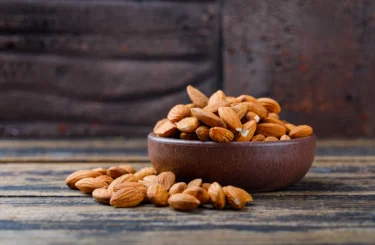
Almonds have very low amounts of calories. A 100 grams of almonds contains only 549 kcals1. Eating small amounts of almonds on a daily basis can provide your body with high levels of nutrients such as proteins, mono-saturated fats and antioxidants that are beneficial for overall health. Furthermore, almonds also improve your health by lowering bad cholesterol2, which tends to be high in people who are obese or overweight.
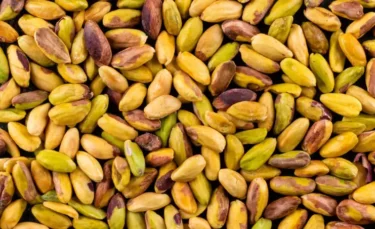
People who like to snack frequently can benefit a lot from eating pistachios. This is mainly because they have very high amounts of fibre, which helps your body feel full for longer periods of time3. Additionally, fibre is good for digestion as it aids with bowel movement.
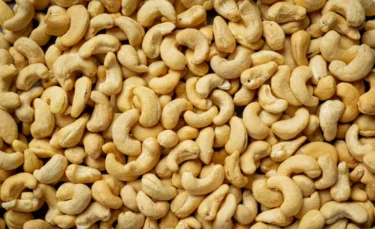
Cashews are delicious nuts that are quite popular in India. They are a very rich source of magnesium, which can be beneficial for weight loss because it helps regulate the fat and carbohydrate metabolism in the body.
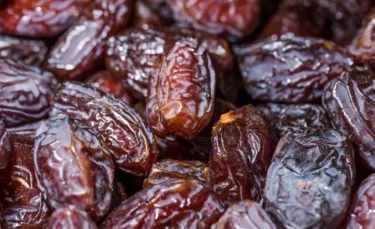
Dates are rich in flavour and good for weight loss. This is because they have high fibre content, which may help to suppress food cravings by making you feel full. As a result, you will be less prone to snacking between your meals.
Dates are also beneficial as they provide your body with Vitamin B5. This vitamin is known for boosting your stamina, which means that you can exercise for a longer period, and work towards getting your ideal weight!
In my experience, I have observed that the digestion process can actually enhance the health benefits of dried fruits. For example, when dried fruits like apricots, figs, and raisins are consumed, their antioxidant activities increase after undergoing gastric digestion. This means that the dried fruits can provide even more antioxidant protection for our cells, shielding our body from the damage caused by harmful free radicals and promoting overall health12.
Dr. Rajeev Singh, BAMS
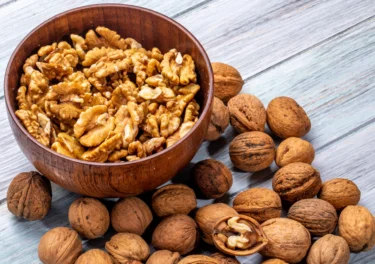
Walnuts are a great dry fruit as they contain high amounts of good fats such as omega 3 fatty acids and alpha-linolenic acid (ALA). Therefore, walnuts can help support your cardiovascular health and is also good for lowering body fat4. This can be a great addition to the diet as many people who are overweight are already at risk for cardiovascular problems and this can be a great way to try and prevent them.
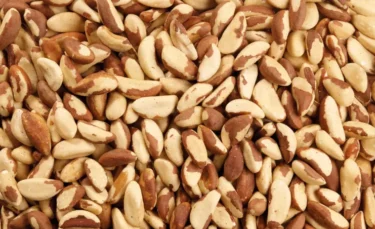
Brazil nuts have many properties that may aid weight loss. They contain an essential amino acid known as L-arginine, which can be helpful in burning fat. It increases body metabolism and thus, prevents the accumulation of unhealthy fat. Brazil nuts have high amounts of certain minerals such as selenium, thiamine, phosphorus and magnesium which can help maintain optimal cholesterol levels in blood and prevent damage to blood vessels5.
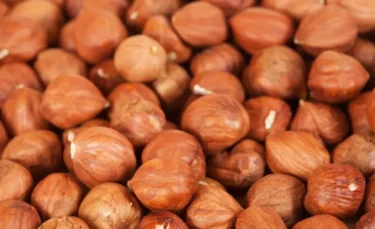
Hazelnuts have high fibre content as well as healthy fats, and both of these help with weight loss6. Like all the other high-fibre dry fruits mentioned in this article, hazelnuts also help in keeping you full for a longer time and controlling unhealthy snacking, which is often the first step in losing weight!
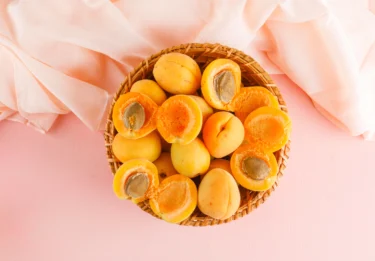
Apricots can stop you from feeling hungry for a long time after you eat them. Additionally, they provide your body with magnesium, which regulates fat metabolism. Apricots have a slightly sweet taste, and you can add them to certain desserts instead of sugar.
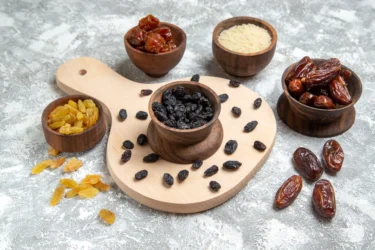
If you are looking for low-salt foods with weight loss properties , then it can be difficult to find suitable snacking options.. However, raisins offer both benefits! In 100 grams of raisins, you will find only 0.5 grams of fat and 299 kcal, making this a great snack for people who are trying to lose weight. They are proposed to help regulate cholesterol levels and may reduce hunger by influencing hormones responsible for satiety7.
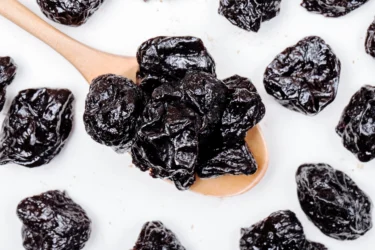
Prunes are also commonly called dried plums. They have high dietary fibre content, which promotes peristaltic movements in the intestines. As a result, waste and toxins get released from your body quickly and this can help you in losing weight. Additionally, 100 grams of prunes contains only 240 kcal, making this a good snack for people who need to control their daily calorie intake8.
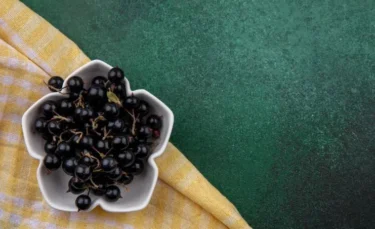
Black currant makes for a great pre-workout snack. It is easy to include in your diet and a versatile dry fruit like raisins. These dried fruits are high in nutrition and taste, making them a desirable snack. The dietary fibre and low sugar content. aids in weight loss. It also helps with other health issues like diabetes and heart disease due to its antioxidant properties9.
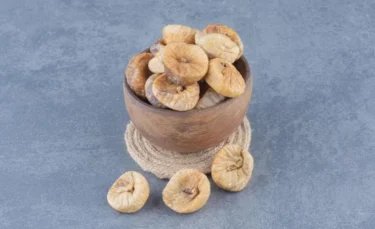
Dried figs are abundant in dietary fibres that aid the digestive system to function optimally. Figs also contain a digestive enzyme known as ficin. This enzyme helps you lose weight as it by improving lipid metabolism and reducing your craving for sugar. It also has a positive effect on gut microbes and helps fight oxidative stress10.
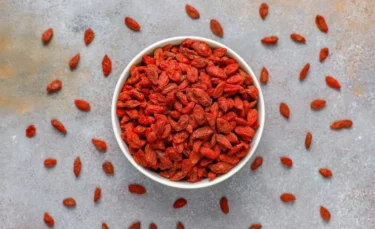
These tiny red berries are packed with nutrients and antioxidants. Goji berries have high fibre content and help increase the metabolism of your body. Drinking goji berry juice can boost metabolism and aid your weight loss journey11.
Over the years, I have observed that besides aiding in weight loss, dried fruits may also have a positive impact on reducing the risk of cardiovascular disease (CVD). While the consumption of dried fruits alone may not be significantly associated with cardiovascular mortality, when combined with fresh fruit intake, it has been found to lower the risk of CVD mortality. Therefore, incorporating a variety of dried and fresh fruits into your diet can help promote heart health and reduce the risk of cardiovascular issues12.
Dr. Smita Barode, BAMS, M.S.
Based on my experience, I have observed that incorporating dried fruits into your diet can be beneficial for your overall health. Dried fruits are a great source of dietary fiber, containing approximately 3.7 to 9.8 grams per 100 grams. By consuming around 20 to 30 grams of dried fruits per day, you can fulfill about 10 to 16% of your recommended daily fiber intake, which is around 14 grams12.
Dr. Siddharth Gupta, B.A.M.S, M.D (Ayu)
If you do not want to eat a bowl of raw nuts, you can consume them in other ways that are equally beneficial for you. For example:
Also Read: The Detailed 7 Days GM Diet Plan for Weight Loss
If you plan on adding dry fruits to your diet, here are a few other helpful tricks to speed up your weight loss:
Also Read: Ajwain: Uses, Benefits, Side Effects, and More!
Your health depends a lot on your weight as it can impact various body functions. Therefore, monitoring the same diligently can help you improve the way you look and feel. Ultimately, this can have many positive impacts on your life such as improved confidence and self-esteem, better social skills, more motivation and positive thoughts. Even if it may seem very difficult initially, you should know that if you take simple steps such as eliminating unhealthy food items and including weight loss foods like dry fruits in your diet can help you achieve your goals!
Dry fruits are healthy snacks to eat on the go. Dry fruits like almonds, apricots, prunes, figs and others mentioned above, can help reduce food cravings and avoid weight gain. However, to target fat on specific sites in the body, a regular fitness regimen is essential..
Soaking dry fruits helps replenish moisture and fortifying other nutrients present in them and seeds. It also ensures better digestion and enhances the flavour. Consuming soaked dry fruits regularly on an empty stomach in the morning can be good for health.
It is recommended that having 6-8 almonds each day is safe. Soaked almonds are beneficial, and it is best to consume them in the morning. However, you must avoid having fried and salted almonds.
Disclaimer: The information provided here is for educational/awareness purposes only and is not intended to be a substitute for medical treatment by a healthcare professional and should not be relied upon to diagnose or treat any medical condition. The reader should consult a registered medical practitioner to determine the appropriateness of the information and before consuming any medication. PharmEasy does not provide any guarantee or warranty (express or implied) regarding the accuracy, adequacy, completeness, legality, reliability or usefulness of the information; and disclaims any liability arising thereof.
Next Page »« Previous Page